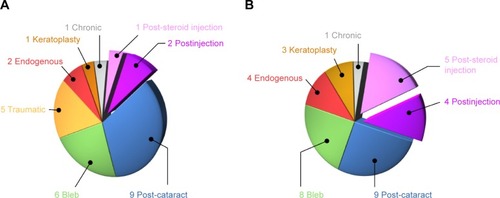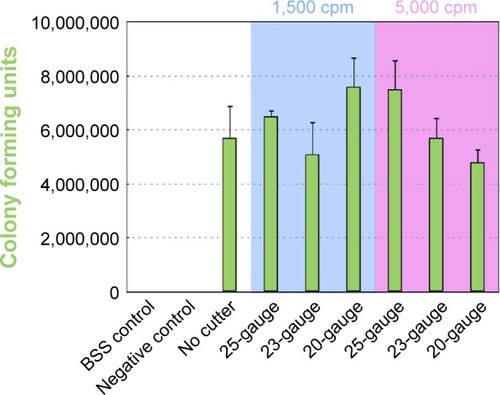Figures & data
Figure 1 Causes of infectious endophthalmitis.
Notes: All causes of infectious endophthalmitis for 20-gauge (A) and small-gauge (B) vitrectomy groups are presented. There were an increasing number of cases of post-intravitreal injection endophthalmitis in the small-gauge group. Numbers 1 to 9 represent number of cases.

Table 1 Final postoperative visual outcomes
Figure 2 Microbiological etiology of infectious endophthalmitis.
Notes: Coagulase-negative Staphylococcus (Coag-neg Staph) and Streptococcus pneumoniae were the most frequently cultured organisms in both groups. There was a significant difference in culture positivity rates between 20-gauge (A) and small-gauge (B) vitrectomy groups. Numbers 1 to 9 represent number of cases. Abbreviations:
S. aureus, Staphylococcus aureus; S. pneumoniae, Streptococcus pneumoniae.

Figure 3 In vitro culture results.
Notes:
Staphylococcus epidermidis colony forming units (cfu) were assayed for each vitrectomy lumen size (25-, 23-, and 20-gauge) at both 1,500 and 5,000 cuts per minute (cpm) (fixed cut) compared to balanced salt solution (BSS) and negative controls. There was no statistically significant difference in culture growth rates for either vitrector size or vitrector cutting speed. Error bars represent standard deviation.

